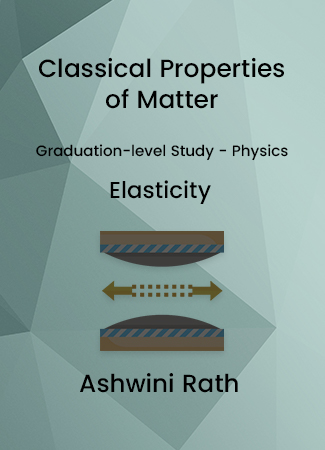
Classical Properties of Matter - Elasticity
Graduation-level Study - Physics
Publisher: Ashwini Kumar Rath
Author: Ashwini Kumar Rath
Full Digital
INR 100.00
This book is intended for being used as a textbook or reference book at the level of first-year graduation-level Physics or engineering. The objective is to provide a set of comprehensive materials that would help the student to grasp the concepts. The prerequisite for this book is pre-university Mathematics and Physics.